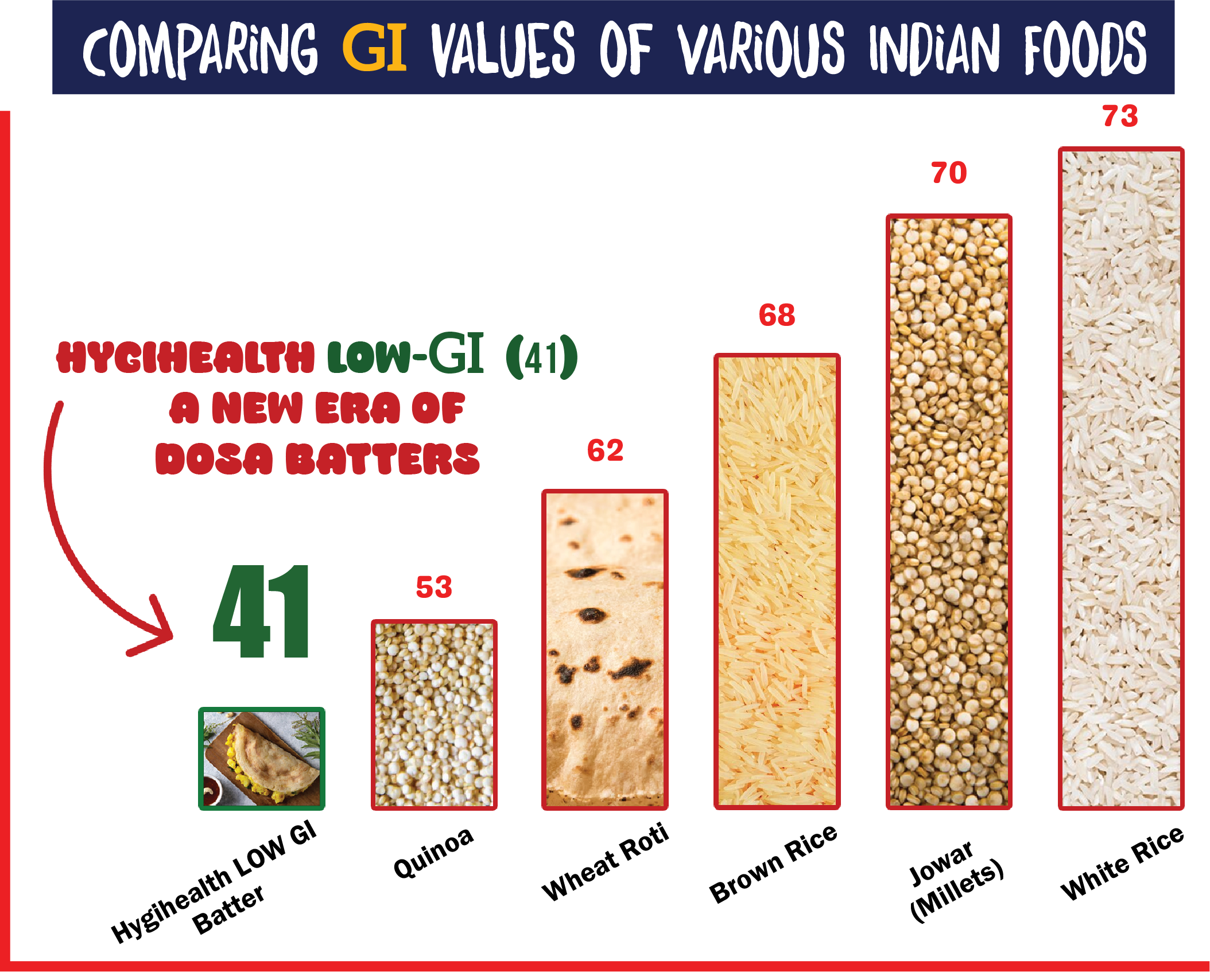
Low GI Diet & HygiHealth Solutions
Discover the benefits of a low glycemic index (GI) diet for a healthier, more balanced lifestyle.

Discover the benefits of a low glycemic index (GI) diet for a healthier, more balanced lifestyle.
The Glycemic Index (GI) is a number that tells you how quickly a food raises your blood sugar after you eat it. It's measured on a scale of 0 to 100. High GI foods (like white rice, sugar, and white bread) spike your blood sugar fast, while Low GI foods (Low GI rice, quinoa, and black rice) raise it slowly and steadily—keeping your energy balanced and helping you feel full longer.
By choosing low GI foods, you're giving your body a steady supply of energy while reducing the burden on your insulin response—making this diet a powerful tool for long-term health.

Avoid fatigue caused by sugar crashes.
Helps regulate insulin response for better diabetes management.
Supports cholesterol and blood pressure management.
Reduces appetite and keeps you full longer.
Naturally fermented low GI foods support the microbiome.
Supports cholesterol and blood pressure management.
At HygiHealth, we’re making everyday eating smarter and healthier. Our Low GI Dosa Batter is carefully formulated with whole grains and pulses to support blood sugar management and overall wellness.
We're also excited to introduce our other products Low GI Rice and Low GI Chapati, crafted with the same commitment to health and taste — perfect for balanced, everyday meals.

Global and Indian studies strongly support the advantages of a Low GI (Glycemic Index) diet:
The American Journal of Clinical Nutrition: Low GI diets improve glycemic control and reduce insulin demand.
Read MoreThe Lancet: Linked low GI food consumption to a lower risk of heart disease and stroke.
Read MoreHarvard Medical School: Notes low GI diets help manage type 2 diabetes and promote long-term weight loss.
Read MoreWorld Health Organization (WHO): Recommends Low GI diets for diabetes prevention and management globally.
Read MoreProfessor Jayashankar Telangana State Agricultural University (PJTSAU): Highlights the role of traditional millets and whole grains in lowering glycemic response, aiding diabetic-friendly diets.
Read MoreAcharya N.G. Ranga Agricultural University (ANGRAU): Research supports the integration of low GI ingredients like pulses and millets into daily staples to promote metabolic health and reduce lifestyle disease risk.
Read More